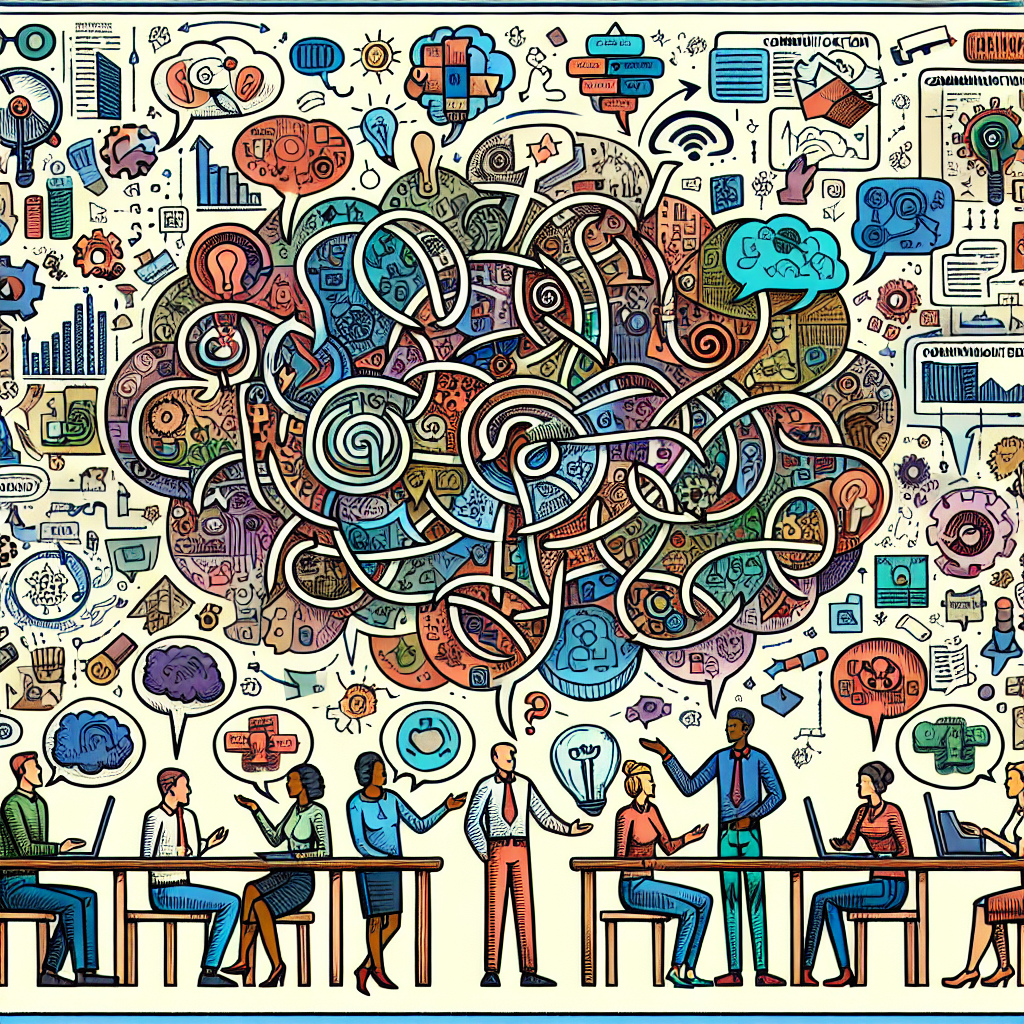Communicating Complex Ideas Simply
Simplifying Complex Concepts: Expert Tips
Introduction
Effective communication is crucial in all aspects of life, whether it be in personal relationships, in the workplace, or in educational settings. However, one of the biggest challenges in communication is conveying complex ideas in a simple and easy-to-understand manner. This can be especially difficult when dealing with technical or specialized topics that may be unfamiliar to the target audience. In this article, we will explore the concept of simplifying complex ideas and the importance of doing so in order to effectively communicate and facilitate learning.
What is a Complex Concept?
A complex concept is an idea or information that is difficult for an individual or group to understand due to its technicality, abstract nature, or unfamiliarity. It may involve multiple components, intricate details, and specialized terminology, making it challenging for the average person to grasp and comprehend. Examples of complex concepts include scientific theories, mathematical equations, legal jargon, and technical processes.
The Importance of Simplifying Complex Concepts
Simplifying complex concepts is vital for effective communication and learning. When information is presented in a complicated or convoluted manner, it can lead to confusion, frustration, and misinterpretation. This can hinder the transfer of knowledge and prevent the target audience from fully understanding and retaining the information being conveyed.
On the other hand, when complex ideas are simplified, they become more accessible and easier to understand for a wider audience. This allows for better engagement and retention of information, leading to more successful communication and learning outcomes.
Understanding the Target Audience
The first step in simplifying complex concepts is understanding the target audience. This involves identifying their level of knowledge and familiarity with the topic, as well as their preferred learning style. By understanding the audience, it becomes easier to determine the most effective approach for simplifying the concept and delivering the message in a way that resonates with them.
Choosing the Right Approach to Simplify Concepts
There are various techniques and strategies that can be used to simplify complex concepts. Some of these include breaking down information into smaller and more manageable chunks, using analogies or real-life examples, and utilizing visual aids such as diagrams or infographics.
It is essential to choose the right approach based on the target audience and the nature of the concept being simplified. For instance, if the audience is not familiar with the topic, starting with a broad overview and gradually delving into more specific details may be more effective. On the other hand, if the audience is already knowledgeable about the topic, it may be more beneficial to focus on simplifying complex and technical terms.
Utilizing Visual Aids and Examples
Visual aids and examples are powerful tools in simplifying complex concepts. They help to break down information into more digestible forms and make it easier for the audience to understand and remember. Visuals can include charts, graphs, diagrams, images, videos, or any other form of visual representation that helps to convey the message in a more engaging and accessible manner.
Real-life examples can also be used to illustrate complex concepts and make them more relatable to the audience. This can help to bridge the gap between the unfamiliar and the familiar, making it easier for the audience to grasp the information being presented.
Breaking Down and Organizing Information
Breaking down complex information into smaller and more organized chunks is another effective way to simplify concepts. This involves breaking down the main idea into subtopics or sections and presenting them in a logical and organized manner. This not only makes the information more manageable to understand but also helps to create a clear structure for the audience to follow.
Organizing information can also involve using headings, bullet points, and numbering to highlight key points and create a sense of hierarchy within the concept being presented. This can help the audience to better navigate and understand the information being conveyed.
The Role of Language and Terminology
The language and terminology used in communicating complex concepts play a significant role in simplification. It is essential to use clear and concise language that is free of jargon or technical terms that may be unfamiliar to the audience. Instead, plain and simple language should be used to convey the message in a way that is easy to understand.
If technical terms are necessary, they should be defined and explained in simple terms to ensure that the audience can follow along. Additionally, the use of metaphor or analogy can be beneficial in simplifying complex terminology and making it more relatable to the audience.
Testing and Refining the Simplified Concept
After simplifying a complex concept, it is crucial to test and refine it to ensure that it effectively conveys the intended message. This can involve getting feedback from the target audience, conducting surveys or quizzes, or using other forms of assessment to determine the level of understanding and retention of the information.
If the concept is not effectively simplified, it may be necessary to refine and revise it further to ensure that it is clear, concise, and easy to understand. This process may involve seeking feedback from a diverse group of individuals to ensure that the concept is accessible to a wide range of audiences.
Conclusion: The Power of Simplifying Complex Concepts for Effective Communication and Learning
Simplifying complex concepts is crucial for effective communication and learning. It requires an understanding of the target audience, choosing the right approach, utilizing visual aids and examples, breaking down and organizing information, using suitable language and terminology, and testing and refining the simplified concept. By simplifying complex ideas, we can bridge the gap between the technical and the non-technical, making it easier for individuals to understand and engage with information, leading to more successful communication and learning outcomes.




